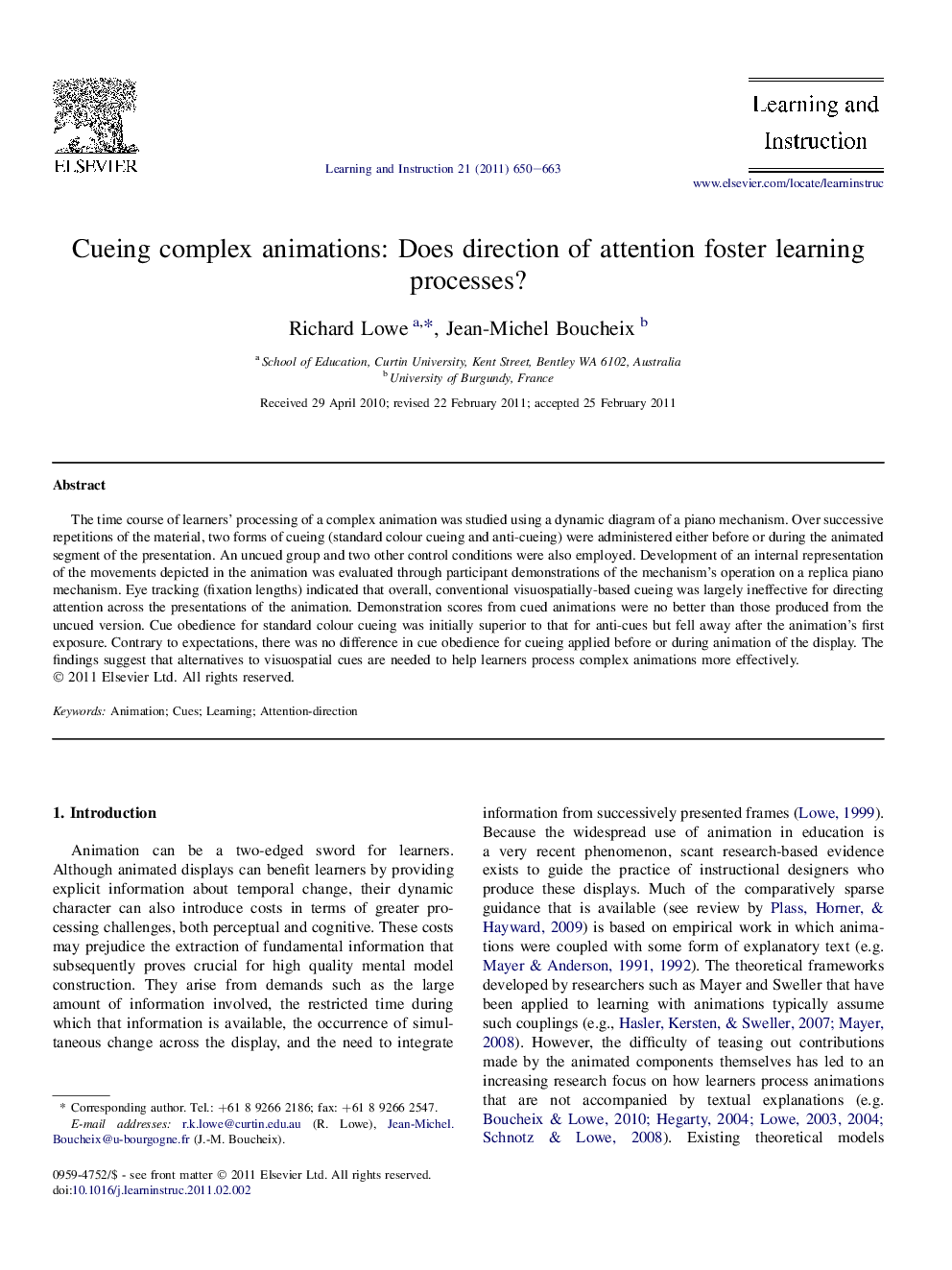| Article ID | Journal | Published Year | Pages | File Type |
|---|---|---|---|---|
| 365667 | Learning and Instruction | 2011 | 14 Pages |
The time course of learners’ processing of a complex animation was studied using a dynamic diagram of a piano mechanism. Over successive repetitions of the material, two forms of cueing (standard colour cueing and anti-cueing) were administered either before or during the animated segment of the presentation. An uncued group and two other control conditions were also employed. Development of an internal representation of the movements depicted in the animation was evaluated through participant demonstrations of the mechanism’s operation on a replica piano mechanism. Eye tracking (fixation lengths) indicated that overall, conventional visuospatially-based cueing was largely ineffective for directing attention across the presentations of the animation. Demonstration scores from cued animations were no better than those produced from the uncued version. Cue obedience for standard colour cueing was initially superior to that for anti-cues but fell away after the animation’s first exposure. Contrary to expectations, there was no difference in cue obedience for cueing applied before or during animation of the display. The findings suggest that alternatives to visuospatial cues are needed to help learners process complex animations more effectively.
► Conventional colour cues used across repeated exposures of a complex animation. ► Learning assessed by physical manipulation of replica model of referent content. ► Cues largely ineffective; bottom-up (i.e., dynamics) and top-down most influential. ► Interleaved process of viewing/manipulation as a powerful new learning tool. ► Results were consistent with the Animation Processing Model (Lowe & Boucheix, 2008).
